
Miles Dewey Davis III was an American jazz musician, trumpeter, bandleader, and composer. He is among the most influential and acclaimed figures in the history of jazz and 20th-century music. Davis adopted a variety of musical directions in a five-decade career that kept him at the forefront of many major stylistic developments in jazz.
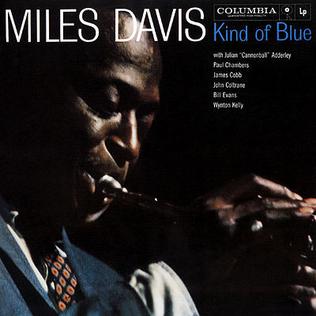
Kind of Blue is the fifth studio album released on Columbia, and twenty-eighth overall, by American jazz musician, trumpeter, composer, and bandleader Miles Davis. It was recorded on March 2 and April 22, 1959, at Columbia's 30th Street Studio in New York City, and released on August 17 of that same year by Columbia Records. For the recording, Davis led a sextet featuring saxophonists John Coltrane and Julian "Cannonball" Adderley, pianist Bill Evans, bassist Paul Chambers, and drummer Jimmy Cobb, with new band pianist Wynton Kelly appearing on one track – "Freddie Freeloader" – in place of Evans.
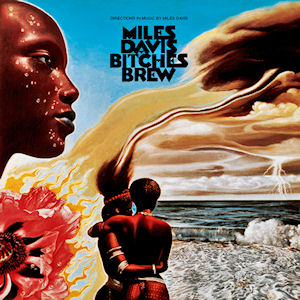
Bitches Brew is a studio album by American jazz trumpeter, composer, and bandleader Miles Davis. It was recorded from August 19 to 21, 1969, at Columbia's Studio B in New York City and released on March 30, 1970 by Columbia Records. It marked his continuing experimentation with electric instruments that he had featured on his previous record, the critically acclaimed In a Silent Way (1969). With these instruments, such as the electric piano and guitar, Davis departed from traditional jazz rhythms in favor of loose, rock-influenced arrangements based on improvisation. The final tracks were edited and pieced together by producer Teo Macero.

Attilio Joseph "Teo" Macero was an American jazz saxophonist, composer, and record producer. He was a producer at Columbia Records for twenty years. Macero produced Miles Davis' Bitches Brew and Dave Brubeck's Time Out, two of the best-selling and most influential jazz albums of all time. Although the extent of his role has been disputed, he also has been associated with the production of Davis' 1959 album Kind of Blue, jazz's best-selling record. Macero was known for his innovative use of editing and tape manipulation unprecedented in jazz and proving influential on subsequent fusion, experimental rock, electronica, post-punk, no wave, and acid jazz.

'Round About Midnight is an album by jazz trumpeter Miles Davis that was originally released by Columbia Records in March 1957. It was Davis' first album with Columbia.

Filles de Kilimanjaro is a studio album by American jazz trumpeter Miles Davis. It was recorded in June and September 1968, and released on Columbia Records. It was released in the United Kingdom by the company's subsidiary Columbia (CBS) in 1968 and in the United States during February 1969. The album is a transitional work for Davis, who was shifting stylistically from acoustic recordings with his "second great quintet" to his electric period. Filles de Kilimanjaro was well received by contemporary music critics, who viewed it as a significant release in modern jazz. Pianist Chick Corea and bassist Dave Holland appear together on two tracks, their first participation on a Davis album.

In a Silent Way is a studio album by American jazz trumpeter, composer, and bandleader Miles Davis, released on July 30, 1969, on Columbia Records. Produced by Teo Macero, the album was recorded in one session date on February 18, 1969, at CBS 30th Street Studio in New York City. Macero edited and arranged Davis's recordings from the session to produce the album. Marking the beginning of his "electric" period, In a Silent Way has been regarded by music writers as Davis's first fusion recording, following a stylistic shift toward the genre in his previous records and live performances.
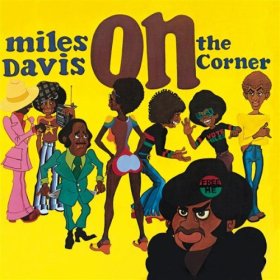
On the Corner is a studio album by American jazz trumpeter, bandleader, and composer Miles Davis. It was recorded in June and July 1972 and released on October 11 of the same year by Columbia Records. The album continued Davis's exploration of jazz fusion, and explicitly drew on the influence of funk musicians Sly Stone and James Brown, the experimental music of Karlheinz Stockhausen, the free jazz of Ornette Coleman, and the work of collaborator Paul Buckmaster.

Big Fun is an album by American jazz trumpeter Miles Davis. It was released by Columbia Records on April 19, 1974, and compiled recordings Davis had made in sessions between 1969 and 1972. It was advertised as a new album with "four new Miles Davis compositions" One of three Davis albums released in 1974 and largely ignored, it was reissued on August 1, 2000, by Columbia and Legacy Records with additional material, which led to a critical reevaluation.

The Man with the Horn is an album released by Miles Davis in 1981. It was Davis's first new studio album since 1972’s On the Corner, his first recordings of any kind since 1975 and his first activity following a six-year retirement. The album title references his 1952 10-inch LP Young Man with a Horn.
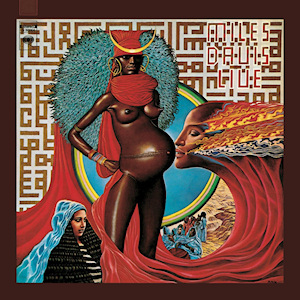
Live-Evil is an album of both live and studio recordings by American jazz musician Miles Davis. Parts of the album featured music from Davis' concert at the Cellar Door in 1970, which producer Teo Macero subsequently edited and pieced together in the studio. They were performed as lengthy, dense jams in the jazz-rock style, while the studio recordings consisted mostly of renditions of Hermeto Pascoal compositions. The album was originally released on November 17, 1971.
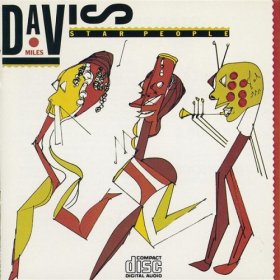
Star People is a 1983 album recorded by Miles Davis and issued by Columbia Records. It is the second studio recording released after the trumpeter's six-year hiatus, the first to feature electric guitarist John Scofield, who was recommended by saxophonist Bill Evans, and the last to be produced by long-standing collaborator Teo Macero.
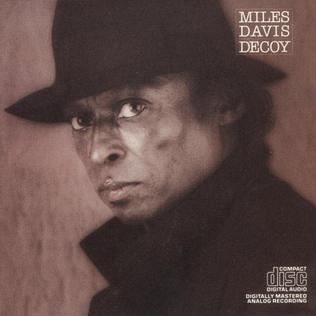
Decoy is a 1984 album by jazz musician Miles Davis, recorded in 1983. Keyboardist Robert Irving III and guitarist John Scofield wrote or co-wrote most of the new compositions. Saxophonist Branford Marsalis appears with the group on “Decoy”, “Code M.D.” and “That’s Right” playing soprano.

Agharta is a 1975 live double album by American jazz trumpeter, composer, and bandleader Miles Davis. By the time he recorded the album, Davis was 48 years old and had alienated many in the jazz community while attracting younger rock audiences with his radical electric fusion music. After experimenting with different line-ups, he established a stable live band in 1973 and toured constantly for the next two years, despite physical pain from worsening health and emotional instability brought on by substance abuse. During a three-week tour of Japan in 1975, the trumpeter performed two concerts at the Festival Hall in Osaka on February 1; the afternoon show produced Agharta and the evening show was released as Pangaea the following year.

Miles Davis at Fillmore is a 1970 live album by jazz trumpeter Miles Davis and band, recorded at the Fillmore East, New York City on four consecutive days, June 17 through June 20, 1970, originally released as a double vinyl LP. The performances featured the double keyboard set-up Davis toured with for a few months, with Keith Jarrett and Chick Corea playing electronic organ and Fender Rhodes electric piano, respectively. The group opened for Laura Nyro at these performances.

Black Beauty: Miles Davis at Fillmore West is a live double album by American jazz trumpeter, composer, and bandleader Miles Davis. It was recorded on April 10, 1970, at the Fillmore West in San Francisco, shortly after the release of the trumpeter's Bitches Brew album and the recording of Jack Johnson (1971). Black Beauty was produced by Teo Macero, Davis' longtime record producer.

My Funny Valentine: Miles Davis in Concert is a live album by Miles Davis. It was recorded at a concert at the Philharmonic Hall of Lincoln Center, New York City, NY, on February 12, 1964.

Miles! Miles! Miles! Live in Japan '81 is an album by Miles Davis, released exclusively in Japan in 1993. It contains recordings from the October 4, 1981 concert in Tokyo, some of which had appeared on We Want Miles, including the original version of the track "Jean-Pierre", elsewhere edited by producer Teo Macero to remove the first twenty-five seconds of introduction, consisting primarily of a guitar riff and percussion.

Quiet Nights is a studio album by jazz musician Miles Davis, and his fourth album collaboration with Gil Evans, released in 1963 on Columbia Records, catalogue CL 2106 and CS 8906 in stereo. Recorded mostly at Columbia's 30th Street Studios in Manhattan, it is the final album by Davis and Evans.

Philippe Gaillot is a French jazz-fusion guitarist, pianist, singer, and composer. He is also a producer and sound engineer.




















